Index
The Devil 13 HD 7990 looks powerful. It’s huge though, measuring 31.75cm (12.5 inches) in length, 13.8cm in height. It takes up three slots and weighs in at 1.77kg, believe it or not. It goes without saying that the card will have to be secured well, which is why the company bundles the PowerJack.



The fans take up one slot, while the heatsink takes up two. In between the two 85mm fans is a single 75mm one. Fan RPM can be regulated via Catalyst Overdrive. All the fans are connected via a single 4-pin connector.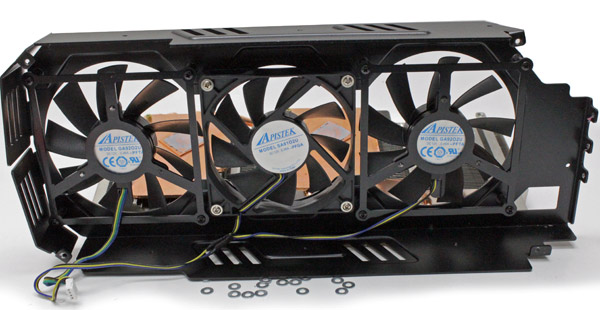
The PCB carries two Tahiti XT graphics processors. We’re talking about first generation chips that run at 925MHz, rather than the 1GHz Edition versions. The internal bridge (PEX 8747 from PLX) is in charge of communication between GPUs and comes with its own little heatsink.
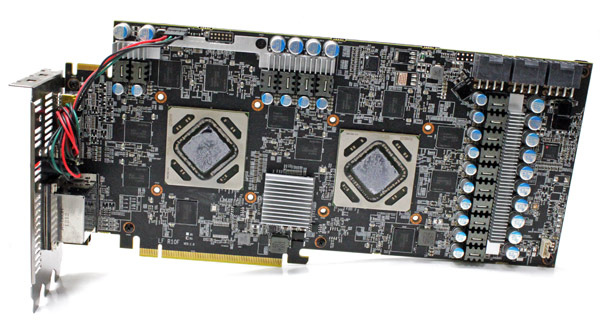
Close to the CrossFire connector is another that resembles a fan connector, but it’s actually the BIOS connector that’s routed to the turbo switch on the I/O panel. The turbo switch will overclock the GPU by 8 percent, i.e. from 925MHz to 1000MHz, and will glow once pressed. Note that the new BIOS will not load until you’ve restarted the machine.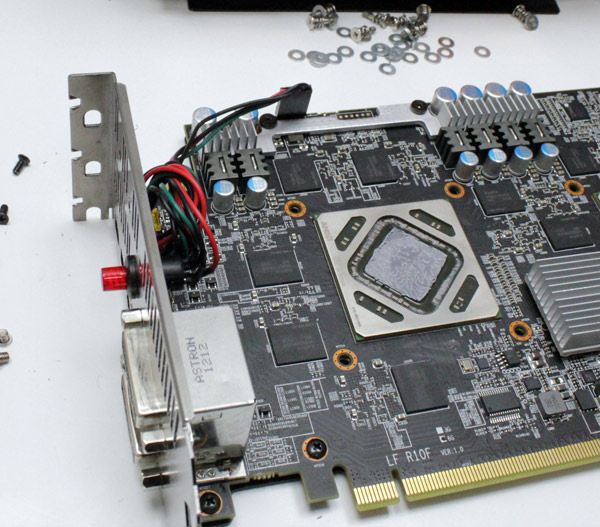
The card packs 6GB of GDDR5, so each GPU has 3GB at its disposal. The memory is Hynix’ and runs at 1375MHz. However, it’s specified to run at 1500MHz, so we expect to boost it with some overclocking.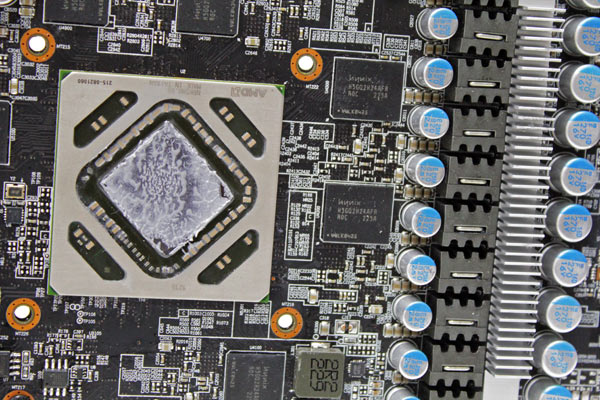
Considering it’s a three slot cooler, we expected the heatsink to be bigger. Taking the cooler apart will require a lot of screwdriver work and patience. The screws that keep the cooler attached to the card are on the back of the card. Each of these screws has four washers for better grip.
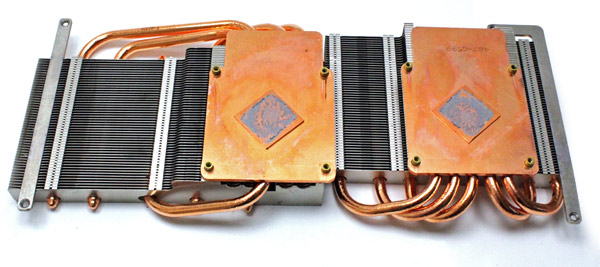
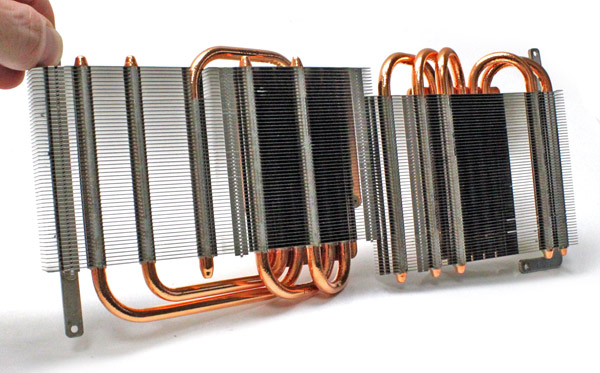
The Devil 13 HD 7990 needs three 8-pin power connectors, which, coupled with PCI-Express power, provides up to 525W. Both GPUs have 6-phase power. On the back of the card are 6 LEDs that display power status.
The rest of the HD 7900 series cards have similar connector layout, i.e. two DVIs, two mini-DisplayPorts and one HDMI. The Devil 13 however comes with an active mini-DisplayPort-to-DVI dongle, which means the card can drive three displays via DVIs, but also you may use all the outputs at the same time.

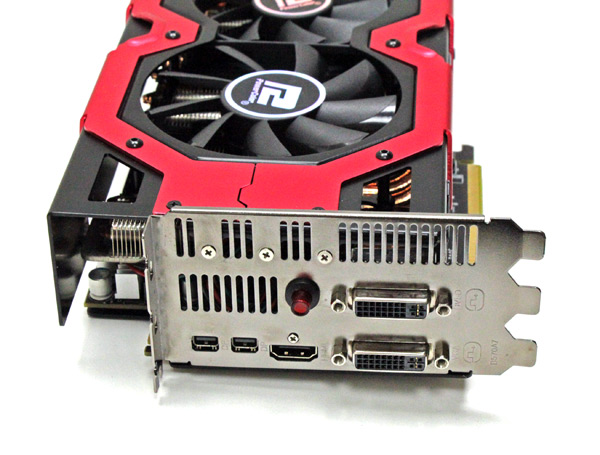
The backplate covers the back of the card and its main functions are to secure the card and make it stable, while looking good in the process. Some of the memory chips ended up on the back as well.




